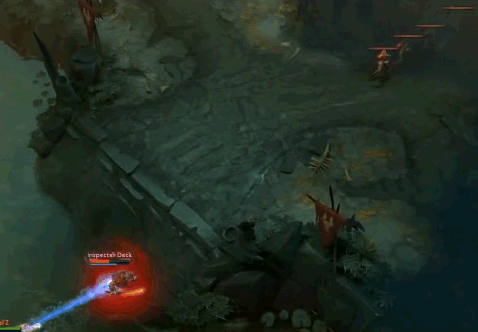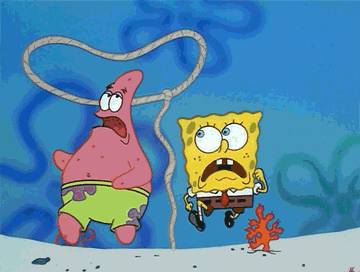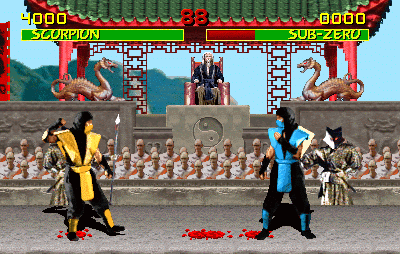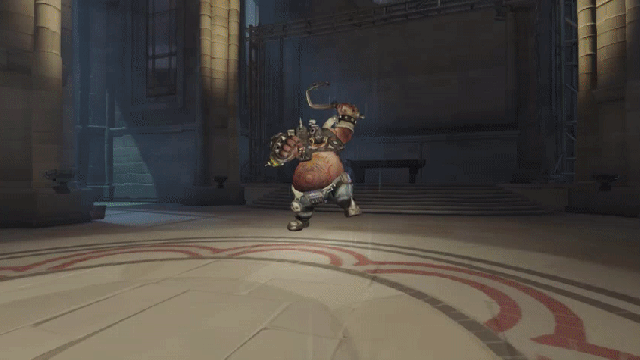The hook is a simple but effective tool in games: A chain, thrown accurately, pulling enemies back to their likely doom. But in the realm of competitive games, hooks seem almost ubiquitous. The reason why a hook is a near-necessity for any competitive game is simple: They’re the biggest moments in games, boiled down to a single throw.
Ed Boon’s yellow ninja may be one the of the earliest examples (as long as we’re not counting Bionic Commando), but the hook really seemed to stick in most with the MOBA crowd. Starting with Defence of the Ancients, a mod for WarCraft 3 that popularised the concept of pushing lanes and destroying ancients, there was one character that stood out from the rest, a sack of flesh and guts called Pudge.
Pudge was modelled after the Abomination unit, and alongside being able to rot the air around him and chop up enemies, he could throw a hook. This hook, if it landed, pulled back whatever unit it hit. By itself, it was a strong tool for displacing enemies; combined with his powerful but short-ranged skills, it was a brutal means of picking off heroes.

The trend continued through game after game, and now it seems every competitive game has to have a hook character of some kind. Dota 2 has its version of Pudge; Overwatch has the shotgun-toting Roadhog; Heroes of the Storm has the lore-friendly Stitches; and League of Legends has multiple, from the robotic Blitzcrank to lantern-flinging Thresh.
The hook of a hook is simple: It’s a big play. Many abilities in these games shoot arrows; stun enemies; or create big, flashy explosions, but few skills actually displace an enemy, drawing them out of their comfort zone and into poor positioning. Hooks are often long-range, with enough travel time that there has to be some guesswork required for both the thrower and the target. Where many strategies are built upon the best laid plans, hooks are the monkey wrench in that system, able to immediately disrupt a coordinated strike with a single fling, yet requiring enough skill to not be all-powerful.
If anyone is the poster-child for a hook-wielding character, it’s Danil “Dendi” Ishutin of Natus Vincere. His Pudge was known and feared for a long time, and most famously demolished TongFu at Dota 2‘s 2013 International. The displacement aspect was most apparent in that game, as Na’Vi used a specific interaction between Pudge’s hook and Chen’s ability to teleport allies home to fling enemy heroes across the map, into the fountain to be eliminated.
Ishutin’s story of why he plays Pudge is a sombre one, involving his father and their bond over fishing. For Ishutin, Pudge’s hook was like a natural extension, where the patience and control of a fisherman translated to in-game skill that few could match at the time.
Though Pudge has since waned in and out of the competitive Dota 2 scene, the hook is still a strong tool in many other games. Roadhog sees regular play in Overwatch thanks to his ability to single out high-priority, low-health targets such as Tracer, Genji and Zenyatta. Thresh was frequently picked in the League Championship Series for a long time as well, with many support players making a name for themselves on the champion.
The correlation between landing a hook in Overwatch and fishing highlights the appeal of it, from the player’s perspective. It’s a moment where a single play has caught out another, a kind of checkmate. The hook-shotgun combo of Roadhog is the pared-down version of this. A single healer is flitting around in the back lines, supporting their team and dodging enemy fire; one simple hook and boom, the player is out of the game and the rest of the team panics to adapt.

It’s like finally winning a prize from the crane game, seeing it rise up with the claw and drop down into the box — it’s not the prize you really wanted, but the rush of landing it, after so many attempts. For any average player, it’s an immediate and irreplicable confirmation of skill, proof that you just outplayed someone else and were rewarded immediately for it.
For competitive players, the hook is a means to force action in a tense stalemate, a trap set for an opponent, a skillful tool that encourages counterplay from both sides. It isn’t point-and-click, and it isn’t direct damage either — more often than not, a hook move is used to start or extend a combo attack, like Batman’s grappling gun in Injustice or Scorpion’s infamous move.

Hooks are the fadeaway threes, the Hail Mary passes, and when one lands, the crowd gets on its feet. They stay competitive because they’re one of the best interactions in any multiplayer game, and will remain that way so long as players like Dendi keep landing big ones.

Comments
2 responses to “What Makes Hooks So Damn Good In Competitive Video Games”
As a Zenyatta main, fuck hooks.
and Hanzos